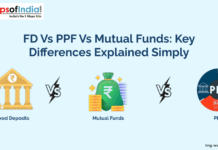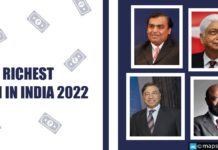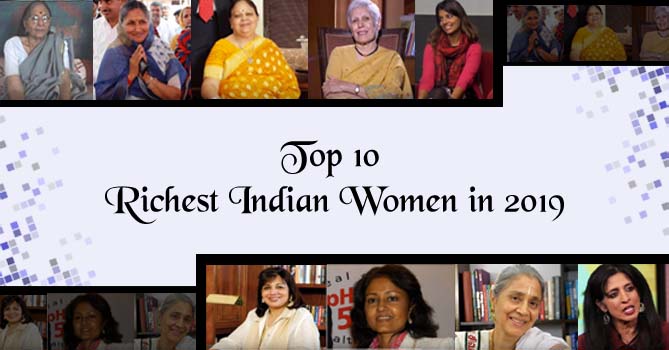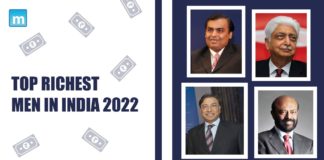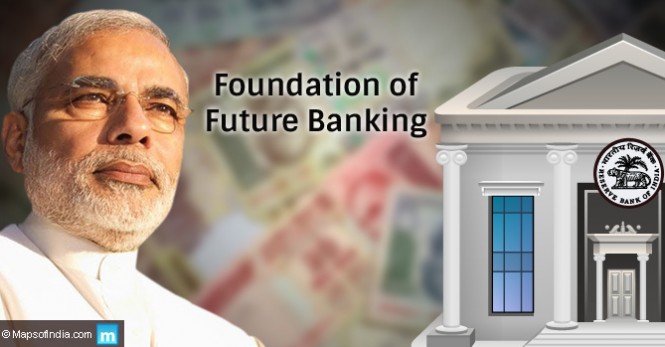 India’s central bank, the Reserve Bank of India (RBI), was established during the British rule in 1935. This year, 2015, is the 80th year of its existence. To commemorate this milestone, the RBI organised a Financial Inclusion Conference in Mumbai on 2 April 2015. Indian Prime Minister Narendra Modi’s address to banks was the highlight of this conference. The speech was meant to set the tenor for the government’s vision for banking institutions in the economy. And he did make some rather poignant statements intended to lay the foundation for future banking in the country.
India’s central bank, the Reserve Bank of India (RBI), was established during the British rule in 1935. This year, 2015, is the 80th year of its existence. To commemorate this milestone, the RBI organised a Financial Inclusion Conference in Mumbai on 2 April 2015. Indian Prime Minister Narendra Modi’s address to banks was the highlight of this conference. The speech was meant to set the tenor for the government’s vision for banking institutions in the economy. And he did make some rather poignant statements intended to lay the foundation for future banking in the country.
Here are some highlights of PM Modi’s address:
Milestones and Financial Inclusion
Financial Inclusion seems to have become the PM’s favourite financial agenda. With the PM Jan Dhan Yojna having entered Phase II, a number of regions in the country believe that poor and low income group Indians have access to mainstream banking like never before. Furthering this agenda, the PM asked the central bank to draw up a 20 year road map leading to full financial inclusion. 2019 (Mahatma Gandhi’s 150th birth anniversary), 2022 (75th year of independence), 2025 (90th anniversary of RBI), and 2035 (centenary of RBI) could be important milestones in this journey, said the PM.
Even as he showed his appreciation to banks for the success of the Jan Dhan Yojna (PMJDY), the PM said that there is immense untapped revenue in the country that needs to be mainstreamed. By the beginning of the month about 14 crore accounts have been opened under the PMJDY scheme but only 41 percent of these have any deposits. The fact that over Rs 14000 crore have been garnered by banks under the scheme is a proof that there is more. He asked banks to focus on the Eastern and North Eastern regions which have lower inclusion rates.
Focus on Farming and Second Green Revolution
PM Modi’s next direction to the RBI and other banks came in the form of enhanced focus on small and marginalised farmers. Farmer deaths due to the oppression of unscrupulous private lenders should weigh in on a banker’s conscience, he said. Bankers are the conduit to ushering in a second green revolution especially in the eastern states of the country – and this can be achieved by supporting the marginalised farmers without fear of creating non-performing assets.
The PM’s statements with regard to increased lending to farmers have come under severe criticism from many quarters. Government guided direct lending to farmers has become an encumbrance for state-run banks while private banks are under no obligations to earmark a percentage of their loans for farmers. Loan towards agricultural activities and small farming is a high-risk segment that contributes heavily towards the total bad loans incurred by state-run banks. The SBI, for example, estimates that about 20 percent of its bad loans may come from this sector. Following the Rs 70000 crore loan waiver given to farmers by the UPA government in 2008, the farm credit culture of the country has crashed, say news reports.
Funding Green Initiatives
Apart from farming, banks can also play an important role in environmental protection, said the PM. Funding green initiatives may become vital in the decades to come. Banks shall play a pivotal role in encouraging farmers to choose fruit farming or orchard building activities in areas where carbon emissions of factories have reached disconcerting levels. Tree planting activities deserve the financial backing of Indian banks, said the PM.
Foundation for an Educated India
The true foundations of any society can be laid only by educated people and education plays a vital role in the progress of a country such as India, said the PM. Banks and bankers play an important role in promoting the role of education by lending financial support. With India growing into one of the most populous countries of the world, the role of banks in promoting education becomes all the more significant. Banks were asked to focus on education loans without any bias towards the background of students. Tribal and marginalised sections of society need more support and encouragement – lend to illustrious students and create better citizens, Modi told the banks.
Entrepreneurship and Small Businesses
Traditionally Indian banks have focused on meeting the needs of major businesses and mainstream industries. But with unemployment reaching newer heights, the focus of banks shall be to address small businesses and prospective entrepreneurs. Tapping into high-profit low-investment sectors shall not only be more lucrative for banks but also achieve the welfare objectives that our society now demands. Banks should encourage new and small businesses to draw from the reserves of mainstream banking rather than looking at private money lenders for their financing needs.
Abort Subsidy Culture
Creation of welfare funds depends on the rich and well-to-do letting go of subsidies, said PM Modi. He urged the RBI and banks to start with their employees. By convincing their employees to give up on subsidies, the banks shall create a culture that can spread and generate revenue that may be utilised to provide basic utilities for the country’s poor.
Go Indigenous
PM Modi also took the opportunity to promote his Make in India campaign – a scheme to promote domestic manufacturing businesses. Referring to the RBI’s currency printing and minting role, the PM urged the central bank to use indigenous inks and papers. The RBI prints over 2000 crore currency notes each year. Most of the paper and ink is imported from the UK, Germany, and Japan contributing to a lion’s share of the cost. The notes that bear Mahatma Gandhi’s image should also be “swadeshi”, said the PM. Before this is achieved, however, India will need to build up its capacity to produce currency paper and inks that cannot be counterfeited.
Read More:
Rubbing salt worth Rs 400/kg into people’s wounds?
Rs 500 and Rs 1000 Notes Banned, New Rs 2,000 Note to be out on 10th November
What is Payment Bank and How Does it Work
Bandhan Bank: A New Entrant in the Banking Sector
RBI’s Battle Against Inflation – Bonds to Check Liquidity
RBI’s Concern Over Unclaimed Funds Amounting To Rs 3,652.3 Crore In The Different Banks Of The Country
RBI reduces free ATM withdrawals in metro cities
RBI’s Rate Cut: Beginning of the End of Uncertainty in Investment and Growth
New Financial Reforms from new Governor of RBI
Modi’s Vision for Banking Industry
Investment Risks to Economy – Caution Is the Watchword for RBI
Differentiated Banking Licenses – India’s Next Milestone?
Swap your old currency notes with new one
Why is Mr. Modi Silent on Scams?
Top Five Programmes Launched by Modi
Black Money Issue : Modi Government’s Initiatives
Modi’s Approach to Incredible India Campaign
Top 5 Things You May Not Know About Modi’s Sense of Fashion
One Year of Modi Government: A Look Back
One Year of Modi Government: Performance of Key Leaders
10 Best Things Modi Government Has Done So Far
What Exactly Has Prime Minister Narendra Modi Done Till Now?


